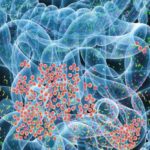EXERCISE ALTERS OUR MICROBIOME
Exercise Alters Our Microbiome. Is That One Reason It’s So Good for Us?
From: Phys Ed
By GRETCHEN REYNOLDS JAN. 3, 2018
Exercise may change the composition and activity of the trillions of microbes in our guts in ways that could improve our health and metabolisms over time, a new study finds.
The results provide novel insights into how exercise can affect even those portions of our bodies that seem uninvolved in workouts, perhaps providing another nudge to stick with our exercise resolutions this year.
I think we all have heard by now that each of us contains a pulsating little universe of bacteria within our guts. This microbiome includes countless different species of microbes in varying proportions that interact, compete and busily release various substances that are implicated in weight control, inflammation, immune responses and many other aspects of health throughout our bodies.
In broad terms, our microbiomes tend to be relatively stable, most studies show. But our microbiomes can change as our lifestyles do. Diet clearly affects the makeup of a person’s microbiome, as do illness, certain drugs, how much we weigh and other factors.
Exercise also has been associated with variations in the microbiome. Past studies have shown that endurance athletes tend to have a somewhat different collection of microbes within their intestines than sedentary people do, especially if the athletes are lean and the sedentary people are not.
But those studies have been associational and could not show whether exercise actually altered microbes or how any microbial changes might later affect health.
So for the new study, which was published in November in Medicine & Science in Sports & Exercise, scientists from the University of Illinois at Urbana-Champaign decided to track the guts of people who undertook an unfamiliar exercise routine.
The study was designed, in fact, as a follow-up to an earlier, interesting animal study by the same scientists. In that work, the researchers had allowed some lab mice to run and others to sit around for most of their adult lives. Gut material from the mice was then transplanted into animals that had been bred to be germ-free, so that their guts would easily incorporate these new tribes of bacteria. After the animals’ microbiomes were established, the scientists exposed the mice to a substance that can cause tissue irritation and inflammation in the colon.
The scientists found that the animals with gut bugs from the runners were better able to resist and heal tissue damage and tamp down inflammation than those whose microbes had come from sedentary mice.
Now the scientists wished to see if exercise would likewise affect the functioning of microbes in people.
They began by recruiting 32 men and women who did not exercise. About half were obese and the rest of normal weight.
The scientists took blood and fecal samples and tested everyone’s aerobic fitness. Then they had the men and women begin supervised workouts, during which their efforts increased over time from about 30 minutes of easy walking or cycling to about an hour of vigorous jogging or pedaling three times per week.
The volunteers were asked not to change their normal diets.
After six weeks, the scientists collected more samples and retested everyone, and then asked the volunteers to stop exercising altogether.
Six weeks later, the tests were once again repeated.
The subsequent analysis showed that the volunteers’ gut bugs had changed throughout the experiment, with some increasing in numbers and others declining. The researchers also found changes in the operations of many microbes’ genes. Some of those genes were working harder now, while others had grown silent.
Most of these changes were not shared from one person to the next. Everyone’s gut responded uniquely to exercise.
But there were some similarities, the researchers found. In particular, they noted widespread increases in certain microbes that can help to produce substances called short-chain fatty acids. These fatty acids are believed to aid in reducing inflammation in the gut and the rest of the body. They also work to fight insulin resistance, a precursor to diabetes, and otherwise bolster our metabolisms.
Most of the volunteers had larger concentrations of these short-chain fatty acids in their intestines after exercise, along with the microbes that produce them.
These increases were greatest, though, among the volunteers who had begun the experiment lean compared to those who were obese, the scientists found.
And perhaps not surprisingly, almost all of the changes in people’s guts dissipated after six weeks of not exercising. By and large, their microbiomes reverted to what they had been at the study’s start.
Still, the study’s overall results suggest that even a few weeks of exercise can alter the makeup and function of people’s microbiomes, says Jeffrey Woods, a professor of kinesiology and community health at the University of Illinois who conducted the study, along with his doctoral student Jacob Allen (now a postdoctoral researcher at Ohio State University) and others.
In theory, Dr. Woods continues, these changes could contribute to some of the broader health benefits of exercise, such as its ability to reduce inflammation throughout the body.
“But more studies need to be done to prove this,” he says.
He also hopes that future research can explain why the obese volunteers showed smaller gains in their fatty-acid producing microbes than the leaner men and women. Additional study could also help to determine whether and how people’s microbiomes might continue to change if they exercise for longer than six weeks — a goal that all of us, of course, have resolved to do in the coming year, right?
A version of this article appears in print on January 9, 2018, on Page D4 of the New York edition with the headline: Gut Bacteria Need Exercise, Too. Order Reprints








